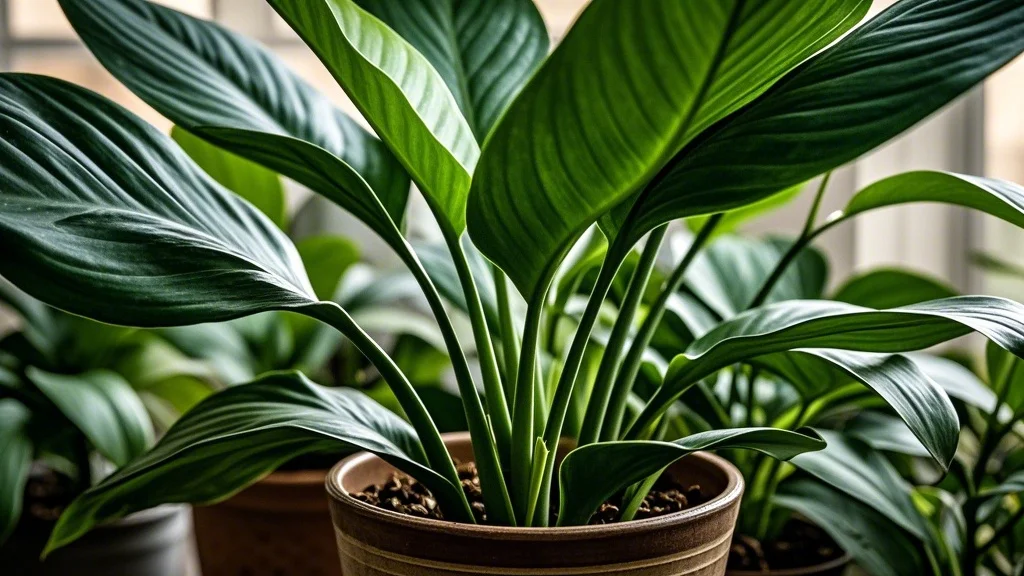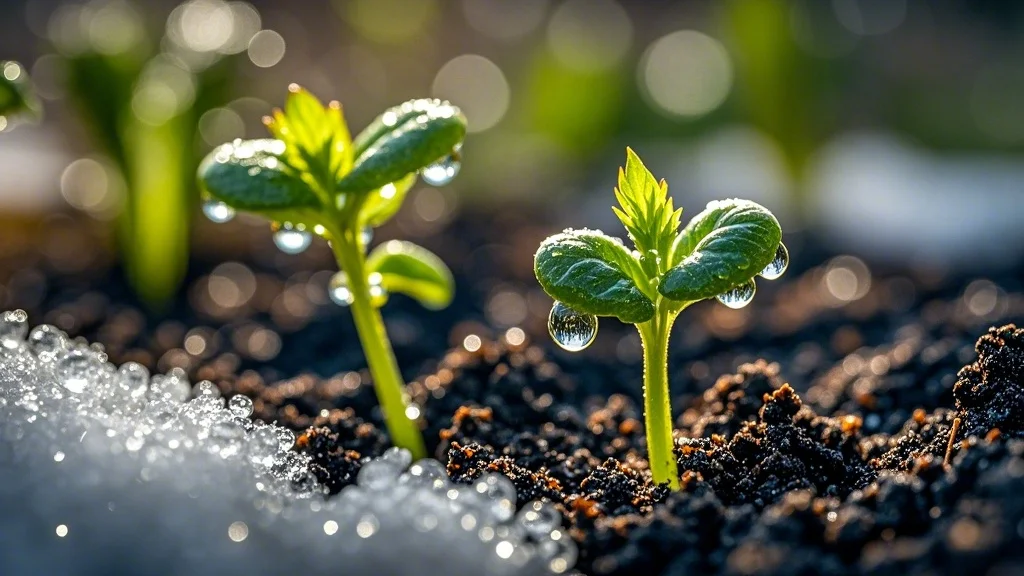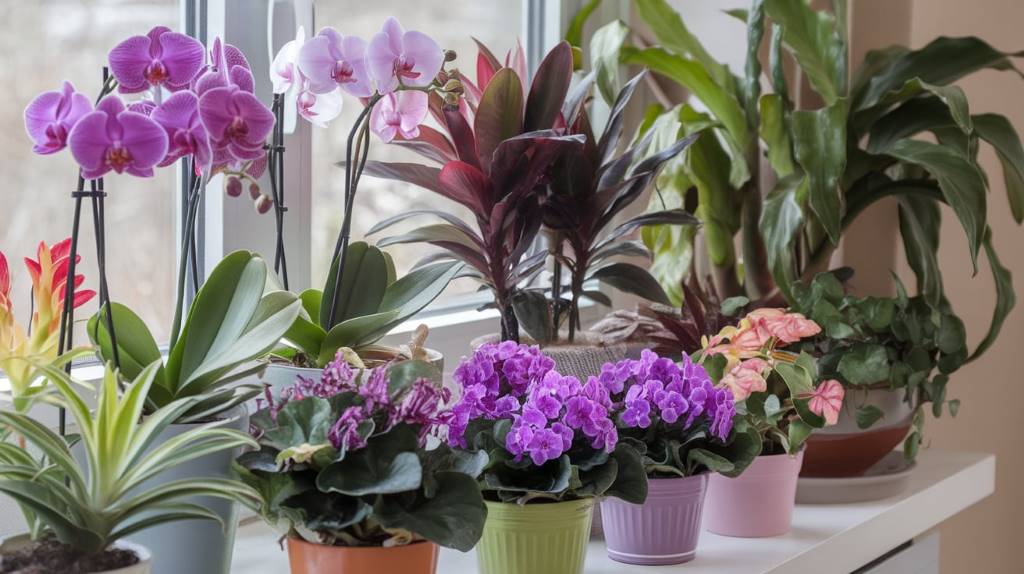For urban gardeners and houseplant enthusiasts, there’s nothing quite as satisfying as watching your plants thrive and grow. Whether you’re nurturing a collection of tropical foliage plants, cultivating herbs on a windowsill, or tending to flowering houseplants, understanding how to safely boost growth can transform your indoor garden from merely surviving to genuinely thriving. In this comprehensive guide, we’ll explore evidence-based techniques to encourage faster, stronger, and more robust growth in your houseplants. These methods respect the natural growth patterns of plants while providing optimal conditions for development. By implementing these strategies, you’ll be able to enjoy lusher foliage, stronger stems, and potentially more abundant flowering—all without resorting to risky shortcuts that might harm your plants in the long run.
Contents
- 1 Understanding Plant Growth Fundamentals
- 2 Optimizing Light Conditions
- 3 Optimizing Soil and Container Conditions
- 4 Watering Strategies for Enhanced Growth
- 5 Nutrient Management for Accelerated Growth
- 6 Temperature and Humidity Optimization
- 7 Growth-Promoting Pruning Techniques
- 8 Advanced Growth Enhancement Techniques
- 9 Seasonal Adjustments for Year-Round Growth
- 10 Troubleshooting Common Growth Issues
- 11 Conclusion
Understanding Plant Growth Fundamentals
Before diving into specific techniques, it’s essential to understand what drives plant growth at a basic level. Plants require several key elements to develop properly:
- : The energy source that powers photosynthesis
- : Essential for cellular processes and nutrient transport
- : Building blocks for new tissue and metabolic functions
- : Provides carbon dioxide for photosynthesis and oxygen for respiration
- : Affects the rate of metabolic processes
- : Room for roots and foliage to expand When any of these factors is suboptimal, growth slows down. The most effective growth-boosting strategies focus on optimizing these fundamental needs rather than forcing unnatural growth through excessive chemicals or manipulations.
Optimizing Light Conditions
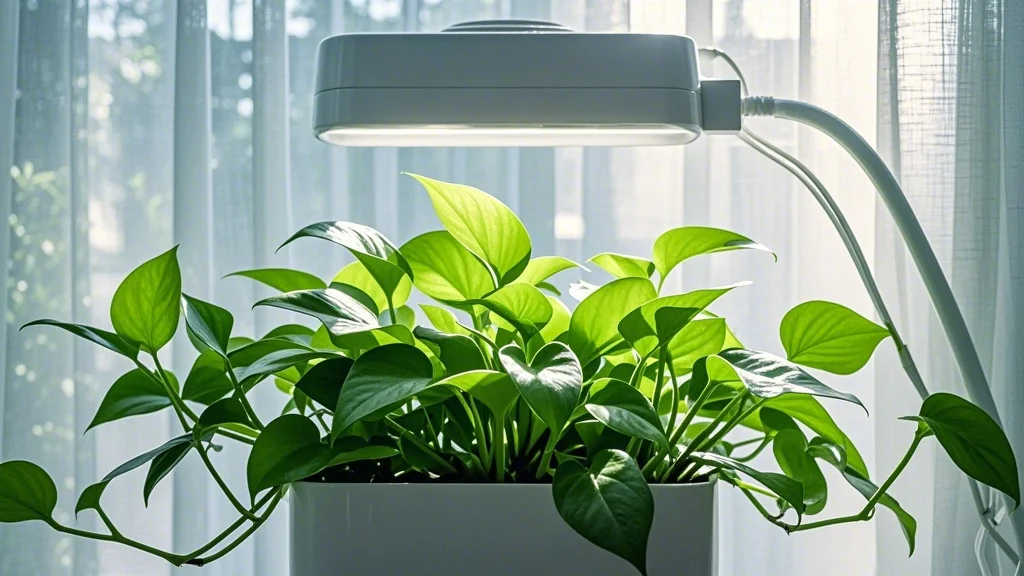
Understanding Light Requirements
Light is perhaps the most crucial factor affecting plant growth. Different species have evolved to thrive in specific light conditions, from the dappled shade of forest floors to the bright exposure of open meadows. For low-light plants (pothos, ZZ plants, peace lilies):
- 4-6 hours of indirect light daily
- Can thrive 5-10 feet from north or east-facing windows
- May benefit from occasional rotation to ensure even growth (philodendrons, dracaenas, ferns):
- 6-8 hours of bright, indirect light
- Best placed near east or west-facing windows with filtered light
- May show slower growth in winter months when light intensity decreases (succulents, cacti, citrus):
- 8+ hours of bright light, including some direct sun
- Thrive in south-facing windows
- Often require supplemental lighting in northern climates
Supplemental Lighting Solutions
For many urban gardeners, natural light alone may not be sufficient, especially during winter months or in apartments with limited window access. Modern grow lights offer excellent solutions: LED Grow Lights:
- Energy-efficient and produce minimal heat
- Available in full-spectrum options that mimic natural sunlight
- Can be positioned 12-24 inches above plants, depending on intensity :
- Most houseplants benefit from 12-16 hours of light daily
- A consistent schedule using timers helps maintain healthy growth cycles
- Providing a dark period is essential for normal plant development :
- Adjust height based on plant needs and light intensity
- Rotate plants weekly to encourage even growth
- Consider light shelves or vertical setups to maximize space
Optimizing Soil and Container Conditions
Selecting the Right Growing Medium
The growing medium serves as both anchor and nutrient reservoir for your plants. Different types of plants have different soil preferences: For Most Tropical Houseplants:
- Well-draining, aerated potting mix
- 40-50% organic matter (peat, coco coir)
- 20-30% aeration components (perlite, pumice)
- 20-30% water-retention components (vermiculite, fine bark) :
- Extra sharp drainage with 50-60% mineral components
- Lower organic matter content (20-30%)
- Consider specialized cactus/succulent mixes (orchids, some philodendrons):
- Very loose, chunky mixes with minimal soil
- High bark, moss, and chunky perlite content
- Often benefit from specialized orchid or epiphyte mixes
Container Selection for Optimal Growth
The container you choose significantly impacts root development and overall plant health: Size Considerations:
- Select pots 1-2 inches larger in diameter than the current root ball
- Avoid oversized containers that retain excess moisture
- Consider the mature size of the plant when selecting containers :
- Terracotta: Breathable, helps prevent overwatering, but dries quickly
- Plastic: Retains moisture longer, lighter weight, good for moisture-loving plants
- Ceramic: Attractive, moderate moisture retention, often heavier
- Fabric: Excellent aeration, promotes root pruning for healthier systems :
- Always select containers with drainage holes
- Use saucers to catch excess water but don’t let plants sit in standing water
- Consider self-watering containers for consistent moisture levels
Watering Strategies for Enhanced Growth
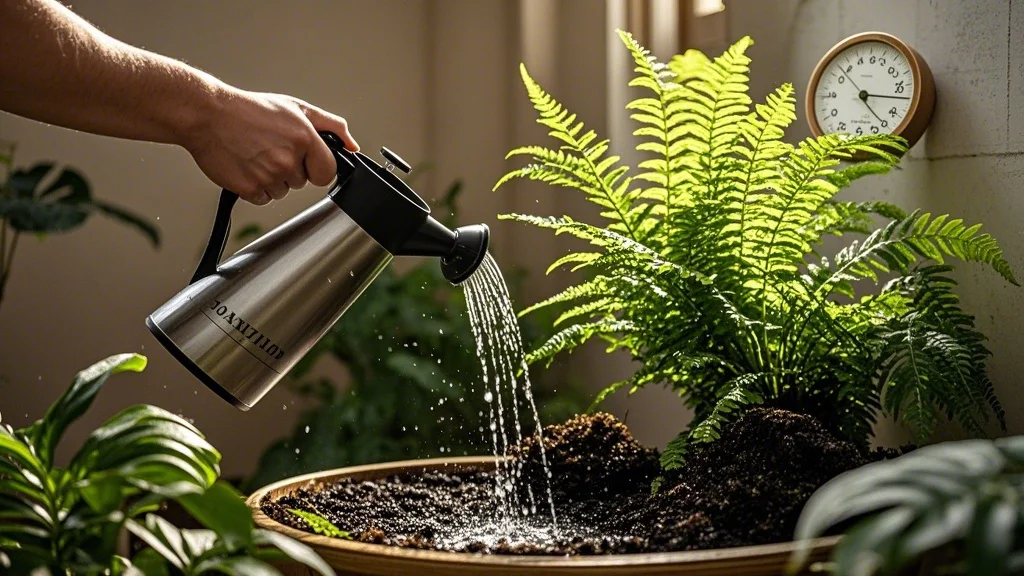
Understanding Water Requirements
Proper watering is a delicate balance—too little causes drought stress, while too much leads to root rot. Both extremes inhibit growth. Watering Frequency Factors:
- Plant species and natural habitat
- Container size and material
- Environmental conditions (humidity, temperature, airflow)
- Season and growth cycle stage :
- Underwatering: Wilting, curling leaves, dry soil, slowed growth
- Overwatering: Yellow leaves, mushy stems, fungus gnats, mold on soil
Optimized Watering Techniques
Bottom Watering:
- Place pots in a tray of water for 15-30 minutes
- Allows roots to draw up moisture as needed
- Reduces risk of overwatering and keeps foliage dry :
- Provide accurate readings of soil moisture at root level
- Help establish appropriate watering schedules
- Particularly useful for plants sensitive to moisture fluctuations :
- Allow tap water to sit overnight to dissipate chlorine
- Consider rainwater or filtered water for sensitive species
- Maintain water temperature between 65-75°F (18-24°C)
Nutrient Management for Accelerated Growth
Understanding Plant Nutrition
Plants require three primary macronutrients (NPK):
- : Promotes leaf and stem growth
- : Supports root development and flowering
- : Enhances overall plant health and disease resistance Additionally, plants need secondary nutrients (calcium, magnesium, sulfur) and micronutrients (iron, manganese, zinc, etc.) in smaller quantities.
Fertilization Strategies
Balanced Approach:
- For most houseplants, a balanced fertilizer (10-10-10 or similar) works well
- During active growth seasons, fertilize every 2-4 weeks
- Reduce or eliminate fertilization during dormant periods :
- Foliage plants: Higher nitrogen (e.g., 3-1-2 ratio)
- Flowering plants: Higher phosphorus (e.g., 1-3-1 ratio)
- Root development: Higher phosphorus and potassium :
- Liquid fertilizers: Fast-acting, easy to control strength
- Slow-release granules: Convenient, provides nutrients over 2-3 months
- Organic options: Gentler, lower risk of fertilizer burn : Always follow the “less is more” principle with fertilizers. Over-fertilization can damage roots, cause salt buildup, and actually inhibit growth. When in doubt, dilute recommended concentrations by half.
Temperature and Humidity Optimization
Temperature Considerations
Most houseplants originate from tropical or subtropical regions and prefer temperatures between 65-85°F (18-29°C). Growth-Promoting Temperature Strategies:
- Maintain daytime temperatures of 70-80°F (21-27°C)
- Allow a slight drop at night (5-10°F cooler)
- Avoid placing plants near drafts, heaters, or air conditioners
- Consider seasonal adjustments to match natural growth cycles
Humidity Enhancement
Low humidity is a common growth-limiting factor in indoor environments, especially during winter or in air-conditioned spaces. Effective Humidity-Boosting Methods:
- Grouping plants together creates a microclimate with higher humidity
- Pebble trays filled with water beneath pots increase local humidity
- Room humidifiers maintain consistent moisture levels
- Misting provides temporary relief but isn’t a long-term solution :
- Most tropical houseplants: 40-60% humidity
- Ferns and calatheas: 60-70% humidity
- Succulents and cacti: 30-40% humidity
Growth-Promoting Pruning Techniques
Strategic Pruning for Bushier Growth
Proper pruning stimulates branching and fuller growth in many plants: Pinching:
- Remove the growing tip with fingers or small scissors
- Encourages lateral buds to develop into branches
- Ideal for herbs, vining plants, and many foliage houseplants :
- Cut stems back by one-third to one-half their length
- Stimulates multiple new growth points
- Best done at the beginning of the growing season :
- Remove entire branches or stems at their base
- Improves light penetration and air circulation
- Reduces energy spent on maintaining excessive growth
Timing Considerations
- Most pruning should occur at the beginning of the active growth season
- Avoid heavy pruning during dormant periods
- For flowering plants, know whether they bloom on new or old growth
Advanced Growth Enhancement Techniques
Root System Optimization
A robust root system is the foundation for vigorous above-ground growth: Root Pruning:
- Carefully trim outer roots when repotting
- Stimulates new root development
- Best for established plants that have become root-bound :
- These beneficial fungi form symbiotic relationships with plant roots
- Enhance nutrient and water uptake
- Available as powders or granules to add when planting or repotting :
- Using fabric pots or air-pruning containers
- Roots naturally prune themselves when they reach air
- Results in more fibrous, efficient root systems
CO2 Enhancement
Plants use carbon dioxide during photosynthesis, and increasing CO2 levels can boost growth in enclosed spaces: Natural Methods:
- Composting in the same room as plants
- Fermentation projects (like brewing kombucha)
- Aquariums with proper balance of fish and plants :
- CO2 bags designed for plant growth
- Small-scale CO2 generators for indoor gardens
- Most effective in enclosed spaces like grow tents
Growth Regulators and Hormones
Plant hormones regulate various aspects of growth and development: Rooting Hormones:
- Contain auxins that stimulate root development
- Useful for propagation and establishing cuttings faster
- Available as powders, gels, or liquids :
- Promotes stem elongation and seed germination
- Can break dormancy in some plants
- Use sparingly as it can cause leggy growth : Synthetic plant growth regulators should be used conservatively and according to package directions. Natural alternatives like willow water (which contains natural auxins) may be preferable for home gardeners.
Seasonal Adjustments for Year-Round Growth
Adapting Care to Natural Cycles
Even indoor plants respond to seasonal changes, and adjusting your care routine accordingly can optimize growth: Spring and Summer (Active Growth):
- Increase watering frequency
- Apply regular fertilization
- Provide maximum appropriate light
- Consider repotting at the beginning of this period :
- Reduce watering frequency
- Decrease or eliminate fertilization
- Maintain adequate light levels (supplement if necessary)
- Focus on maintenance rather than pushing growth
Recognizing Growth Phases
Different plants have different growth patterns:
- : Steady growth year-round (many tropical foliage plants)
- : Distinct active and dormant periods (many flowering plants)
- : Growth occurs in spurts (many succulents and bulbs) Understanding your specific plant’s natural rhythm allows you to provide support when it’s ready to grow rather than forcing growth during natural rest periods.
Troubleshooting Common Growth Issues
Diagnosing Growth Problems
When plants aren’t growing as expected, systematic troubleshooting helps identify the cause: Light Issues:
- Leggy, stretched growth: Insufficient light
- Pale, washed-out leaves: Excessive direct light
- Uneven growth: Inconsistent light direction :
- Crispy leaf edges: Underwatering or low humidity
- Yellow, dropping lower leaves: Overwatering
- Brown leaf tips: Inconsistent watering or mineral buildup :
- Yellowing between leaf veins: Iron or magnesium deficiency
- Purple leaf undersides: Phosphorus deficiency
- Stunted new growth: Calcium deficiency :
- Leaf drop: Sudden temperature changes
- Curling leaves: Low humidity or pest issues
- Overall stunting: Temperature extremes or root constraints
Conclusion
Boosting plant growth safely is about understanding and optimizing the natural conditions that plants need rather than forcing unnatural development. By providing the right balance of light, water, nutrients, and environmental conditions, you can encourage your houseplants to reach their full potential without compromising their health. Remember that each plant species has its own growth rate and pattern—some are naturally slow growers, while others can put on impressive growth in a single season. The most successful approach focuses on overall plant health rather than speed alone. A healthy plant will naturally grow at its optimal rate, while a stressed plant forced to grow quickly will often suffer long-term consequences. By implementing the evidence-based techniques outlined in this guide, you’ll create an environment where your plants can thrive, developing stronger roots, lusher foliage, and potentially more abundant flowers—all while maintaining their natural resilience and beauty.

